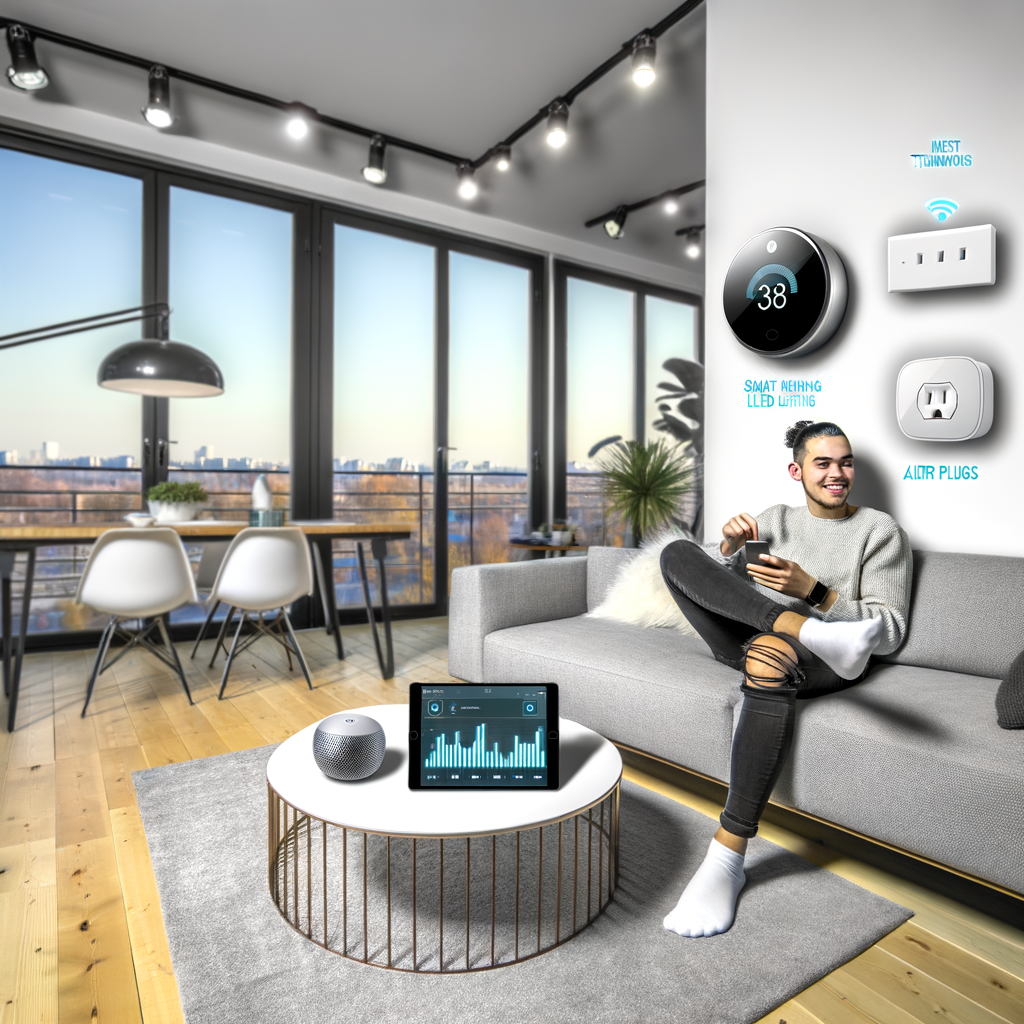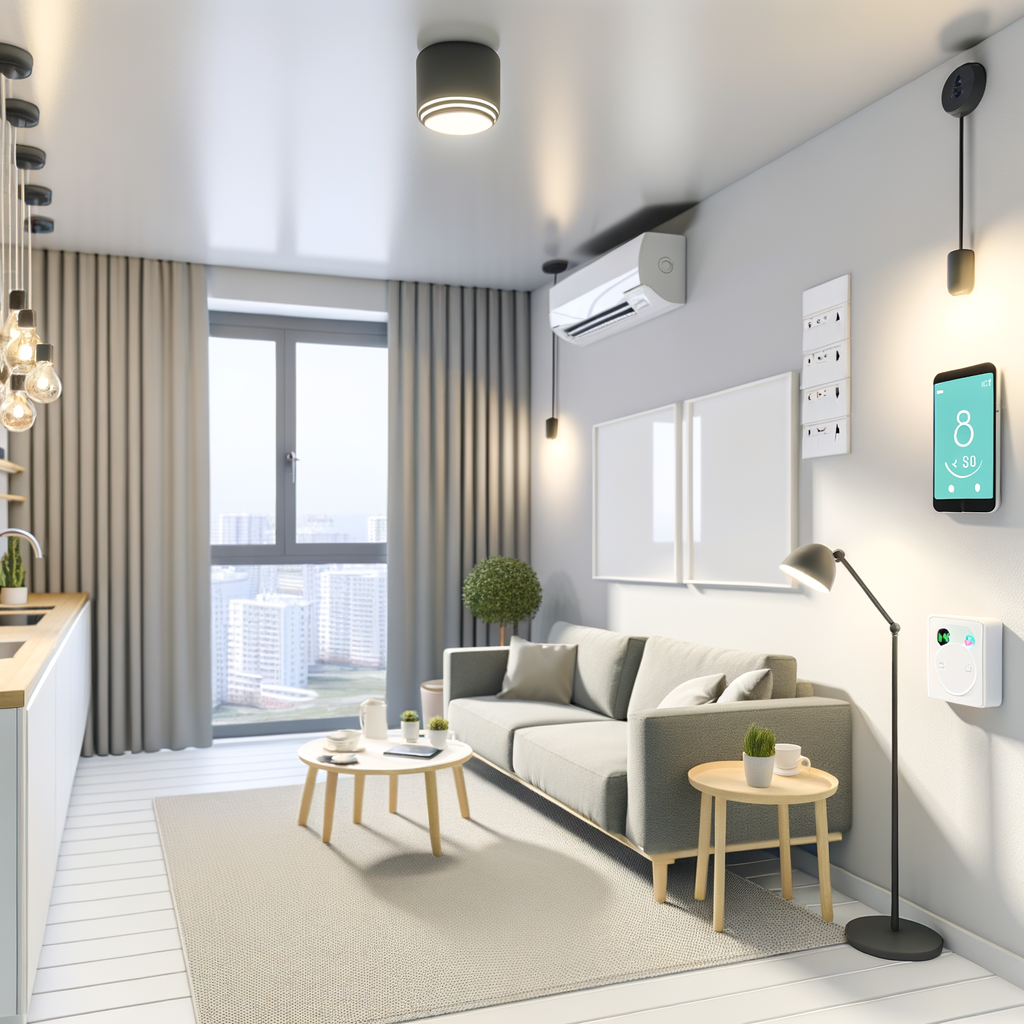Myth-Busting Smart Homes: 5 Common Misconceptions About Energy-Efficient Tech for Renters
Smart home technology isn’t just for tech enthusiasts or homeowners. In fact, energy-efficient devices are increasingly accessible for renters, promising savings and sustainability without permanent modifications. Yet, myths and misconceptions persist, deterring many renters from reaping the benefits.
Let’s bust the top five myths about smart, energy-efficient tech for renters, reveal the truth, and offer you practical, renter-friendly tips to make your home greener and your bills lighter.
Misconception #1: “Smart Tech Requires Major Installation or Renovation”
Why This Myth Exists
Many people associate smart home systems with rewiring, drilling, or otherwise altering their living space, which is usually off-limits for renters. This is especially true for older smart thermostats or integrated security systems, which may require hardwiring.
The Reality
- Plug-and-play devices: Today’s market offers many smart devices specifically designed to be renter-friendly. They don’t require drilling, mounting, or rewiring.
- Wireless connectivity: Most modern energy-efficient gadgets use Wi-Fi or Bluetooth, eliminating the need for structural changes.
- Portable gadgets: Many products are portable, so you can take them with you when you move out.
Actionable Advice for Renters
- Look for no-drill devices and those with adhesive mounts.
- Pilot smart bulbs, plugs, or thermostats labeled as “renter-friendly” or “easy install”.
- Always read reviews or ask landlords before installing semi-permanent tech.
Misconception #2: “Smart Devices Are Expensive and Not Worth the Investment for Renters”
Why This Myth Exists
The perception is that energy-efficient technology comes at a high up-front cost, only paying off over many years. For renters, who may not stay long-term, this seems impractical.
The Reality
- Affordable options: Prices have dropped significantly, with entry-level smart plugs and bulbs often costing less than $20.
- Money-saving potential: Even basic devices can cut energy waste and lower utility bills—savings you’ll see instantly, not years later.
- Self-contained setups: Many devices require only a smartphone app to function fully, with no monthly fees.
Actionable Advice for Renters
- Start small—try a couple of smart bulbs or energy monitoring plugs for the fastest, cheapest impact.
- Keep your receipts: Many utility companies offer rebates on qualifying smart products, lowering your costs even further.
- Choose tech you can reuse in your next rental.
Misconception #3: “Smart Home Tech Poses a Security and Privacy Risk”
Why This Myth Exists
Concerns about hacking, privacy breaches, or sharing home data with landlords or tech companies can discourage renters from adopting smart devices. The notion that “your smart device is watching you” lingers.
The Reality
- Improved security: Brands now prioritize user privacy, with customizable settings for data sharing and frequent firmware updates.
- Local data storage: Some products work entirely offline or allow you to opt out of cloud data storage.
- Parental & guest controls: Users can restrict who controls or sees device activity, even in shared living situations.
Actionable Advice for Renters
- Choose products from reputable brands with clear privacy policies.
- Change default passwords and enable two-factor authentication on devices and home Wi-Fi.
- Opt for devices that store information locally when possible.
- If you have housemates, set up user permissions to avoid accidental changes or privacy slips.
Misconception #4: “Landlords Won’t Allow Smart Home Upgrades”
Why This Myth Exists
Renters often believe landlords will reject any upgrades—even low-impact ones—due to concerns about damage or difficulty restoring the property at move-out.
The Reality
- No-permission-needed gadgets: Most smart plugs, bulbs, and battery-powered sensors require zero alteration to the property, so landlords are rarely involved.
- Value-adding upgrades: Some landlords even encourage tech that boosts energy efficiency and appeal for future tenants.
- Easy restoration: Devices designed for renters can be removed or reset without leaving a trace.
Actionable Advice for Renters
- Let your landlord know about temporary, removable tech, especially if it could lower utility costs.
- Get written permission for any upgrades that require minor installations (like a smart thermostat that replaces the existing unit).
- Document the condition before and after for your records.
Misconception #5: “Smart Home Devices Only Offer Comfort, Not Real Energy Savings”
Why This Myth Exists
It’s easy to view smart home gadgets—smart assistants, lights, plugs—as “nice-to-have” conveniences, not essential energy savers.
The Reality
- Energy usage tracking: Smart plugs and outlets monitor how much power devices use, helping renters spot and cut energy vampires.
- Automated efficiency: Programmable bulbs, thermostats, and power strips reduce waste by adjusting light and climate based on schedules, occupancy, or sunlight.
- Behavioral nudges: Alerts and usage reports encourage more sustainable habits among roommates and family members.
Actionable Advice for Renters
- Install smart power strips to automatically shut down devices when not in use.
- Use smart bulbs with schedules or remote control to prevent unnecessary lighting.
- Pair smart thermostats with window and door sensors for precise temperature management.
- Review weekly/monthly app reports and adjust your routines accordingly.
Getting Started: A Renter’s Roadmap to Energy-Efficient Tech
Step 1: Assess Your Needs
Audit your energy habits: Where does most of your usage (and waste) happen? Is it lighting, climate control, or electronics?
Step 2: Select Renter-Friendly Smart Devices
- Smart plugs: Instantly add remote control and monitoring to any outlet device.
- Smart bulbs: No wiring or installation needed, and you can keep them when you move.
- Portable thermostats: Models that mount with adhesive or fit existing wall plates mean no hardwiring or drill holes.
- Energy monitors: Get instant feedback on your consumption and savings potential.
Step 3: Integrate and Automate
- Most devices use free smartphone apps—no need for extra hubs or complicated setups.
- Set routines: For example, lights can turn off at midnight or when you leave home.
- Share device access with trusted housemates if you co-rent.
Step 4: Track Savings & Optimize
- Monitor your utilities bill over the next few months.
- Adjust schedules, scenes, or automations for better performance.
- Try additional devices as your comfort level grows.
Renters’ FAQs About Smart, Energy-Efficient Home Tech
Can I install a smart thermostat as a renter?
Many smart thermostats are “snap-in” replacements for common wall units or use adhesive for mounting. Always read your lease and, if needed, get landlord approval. Some units are designed specifically for renters and don’t require rewiring.
Will smart devices save me money if I only control a few appliances?
Yes! Even monitoring and automating two or three major devices can trim your bills, especially high-dr




